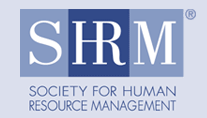Why Engagement Skyrocketed During the Pandemic and Why It's Now Crashing
Status message
A session in this conference ends more than 10 days after the conference! Some sessions may not appear properly in My Session Planner.Business leaders and HR professionals continue to struggle with employees leaving companies in droves, talent can't be found to fill critical open positions, and employee engagement levels are plummeting. Talent issues, in large part, have been fueled by the global COVID-19 pandemic that has forced organizations to transform their businesses, refocus their strategic imperatives, reinvent how and where work gets done, and reimagine how products and services are delivered to the end user. As headlines of COVID-19 and the potential fallout transpired into reality, leaders had to react and make decisions with little to no data or support for what they should do and how. What we do know now is that organizations whose leaders have been proactive, rather than reactive, instilled confidence in the future of the company, and those who communicated clearly and transparently are not just surviving but also thriving as a result.
Along with other major employee engagement firms, WSA observed engagement levels significantly increasing between 2019 and 2021. Up until the last few months, these trends suggest that many organizations placed extreme focus on employees. However, even though many organizations had leaders that were proactive, sustainability of heightened engagement levels has been diminishing. To understand what has been driving the surge and decline in employee engagement levels throughout the pandemic, the key drivers that are having the greatest impact on employee perceptions must be explored.
In the session, the presenter will provide an overview of up-to-date employee engagement and work attitude trends based upon three years of data from 402 engagement census survey projects across 284 organization, from pre-pandemic times through the end of 2021 to identify variations in employee perceptions. In addition to providing an update on engagement trends, key drivers, and their respective ranking in relation to various topics/dimensions, will be analyzed and discussed, as well as other factors which may be impacting employees and organizations.
Though many of the traditional drivers of engagement and work perceptions are likely just as impactful, business processes and policies for how talent is developed, recognized, and rewarded may need to be adjusted to changes in where and how employees get work done.
Learning Objectives:
- Current research regarding employee engagement trends, both pre-pandemic and over the last two years.
- Key drivers that are having the greatest impact on employee sentiment and motivations and practical implications for leaders and HR practitioners.
- Factors impacting employees' commitment and intent to stay.
- Best practices to stabilize/increase positive employee attitudes and improve their experience.
In-person session offerings are on a first-come, first-served basis.
Kris Erickson

Kris Erickson currently serves as co-founder and executive consultant for Workforce Science Associates. In this role, she empowers organizations to discover the unique drivers and motivational aspects that drive performance in their workforce and use these to accelerate a high-performance culture.
Kris has over 25 years of consulting experience with Fortune 500 companies. In this capacity, Erickson worked at both the strategic and tactical levels to develop and deploy comprehensive workforce solutions.
Find Sessions by Day
